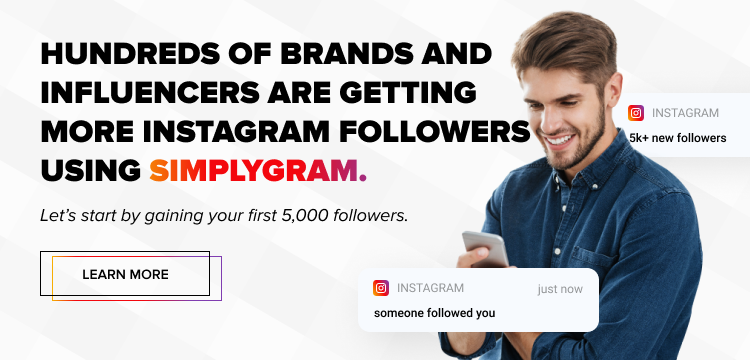Bots have been trending on social media (SM) for a while now. Many users are lauding the helpful bots, but an almost equal number are slamming their nefarious counterparts. It might have got you wondering, “What are bots on social media in the first place”? Are they talking about the botfly parasite? But what would a live parasite have to do with the internet? Maybe they are talking about robots? You’re getting hotter! But you aren’t quite there yet. Let’s take a look at what an SM bot really is.
Tabla de contenidos
What Is a Social Media Bot?
A social media bot is nothing but an automated program, a computer code that is assigned to do specific tasks. These tasks could be anything, from interacting with other programs to communicating with real people like a human. Oh yes, that new Instagram follower that you are chatting with every day could very well be an SM bot! But let’s not jump to conclusions just yet.
If a social media account is communicating with you like a real human, then it probably is a human user. Artificial Intelligence (AI) may have progressed by leaps and bounds in the past few years, but it’s highly unlikely that those valuable resources are being used just to prank you. The more feasible possibility is that it could be one of the millions of fake accounts on social networks. Such accounts are generally controlled by human users, not bots. So what exactly are bots used for, you may wonder.
What Are Social Media Bots Used For?
As mentioned earlier, social media bots are neither fake profiles nor real users. So, what are bots on social media, you may ask? They are simply automatic programs, and every program has a function. This function depends on the creator of the bot. It can tell you the weather or help troubleshoot your account-related problems. SM owners sometimes use many bots to show a greater degree of traffic on their websites. They serve no other purpose and are often harmless. But there are quite a few bad bots doing the rounds of social media. They can be used to target the entire SM community as a whole or individual active users.
Good Bots vs. Bad Bots
Bots imitate human behavior, which makes them have unique bot behavior, too. Just as there are good people and bad people, there are good bots and bad bots. The battle between good and bad has been raging since time immemorial. Sometimes, the good gains the upper hand, and sometimes, the bad. The case is similar to SM bots.
- Good Bots
Good bots are those whose actions have a positive impact on the social media website and on the SM community. They are helpful in nature and are programmed to perform a number of beneficial tasks.
- Good bots aid in improving the Search Engine Results Pages (SERP) ranks of the SM website.
- They assess the content posted to ensure it’s safe for the end users. In many cases, they are used to filter age-appropriate content, too.
- A network of bots can act as a marketing agency, promoting relevant or suggested content to users.
- They keep the website spam-free and the user experience hassle-free.
The one feature that makes a ‘great’ bot is invisibility. SM users won’t even be able to detect their presence. A great bot works behind the scenes, making sure that everything is running smoothly and taking care of any anomalies or glitches that may arise. Essentially, good bots are virtual equivalents of superhero vigilantes like Batman. They help keep the streets crime-free without declaring their presence!
- Bad Bots
Any bot that impacts the social media environment negatively is a bad bot. Unlike good bots, which are perfectly content working inconspicuously, bad bots like to rear their ugly head from time to time. They are Joker to the good bot’s Batman, the atrocious villains of the virtual world. They are programmed to achieve only one goal: to spread negativity.
- Bad bots promote posts and content that harm the community.
- They spread fake news among the users so that they could negatively impact the environment.
- They are the instigators of spam and scams, content that dupes the users on social media sites.
- On a smaller scale, they are responsible for data theft, unethical hacking, and malware.
- On a large scale, they are known to initiate Denial of Service (DoS) attacks on social media platforms.
- A network of bad bots is also able to change the perception of SM users, spreading hatred and hate speeches in the community.
A perfect example of bad bots in action is the Arab Spring Movement of 2010-2012. Experts suggest that the government used bots on Twitter to flood user feeds with inaccurate information just to halt free speech during the movement.
What’s the Difference Between a Social Media Bot and a Chatbot?
These days, you might have noticed that bots can dish out information and even chat with SM users. Is the answer to what are bots on social media the same as what are chatbots? Essentially, a chatbot is a social media bot, but not all social media bots are chatbots. They are specific types of SM bots that are created for communicating with other users, hence the name. Among chatbots, too, there are the good and the bad kinds of bots. The good bots provide useful assistance to the SM users, whereas the bad bots are programmed to mislead you.
A fine example of a good chatbot is Facebook Messenger’s ChatBot feature. They can act as virtual assistants, a kind of customer service representative for your business. You can use it to create FAQs by adding answers to those questions. Whenever your customers ask for an FAQ to your ChatBot, the relevant answer will be automatically provided to them. Chatbots also work on Artificial Intelligence (AI) technology, simulating a human representative to help your customer base.
How Many Social Media Accounts Are Actually Social Media Bots?
A recent survey has revealed that there are over 95 million bot accounts on Instagram alone. Did you know that in 2019, an excess of 2 billion fake profiles were removed from various social networks? Meta, the owner of FB and Insta, is known to remove thousands of fake profiles from their websites each week.
How Can You Distinguish a Social Media Bot from a Real User?
Since SM bots mimic human behavior, it’s often hard to point them out. You will have to chat with them on direct messages to figure out their true nature. Ask them different questions. They won’t go beyond their programming of pre-written texts, so you will eventually realize if they are legitimate users or bots. Alternatively, try out the following methods to reveal their identity.
- Analyze their posting frequency, timing, and content. Are they posting regularly at the exact same time? Does their content seem automated, not as if it was created by genuine social media users?
- Take a screenshot of their photos and run a reverse image search. Is that photo associated with someone else’s account?
- Use third-party apps to determine SM accounts that are bots.
While there may be billions of social media bot accounts out there, many of those have positive functions and act as digital assistants. Additionally, if you are buying followers, they may be malicious bot profiles. Always go for an organic way to gain more followers on social media. Social media is taking every step to detect and remove bad bots. Do your bit for the cause. Report any bad bots you find and socialize safely online.
- How to Promote Your Instagram Account - abril 24, 2024
- How to Hide Instagram Posts - octubre 9, 2023
- How Many Photos Can You Post on Instagram - octubre 9, 2023


